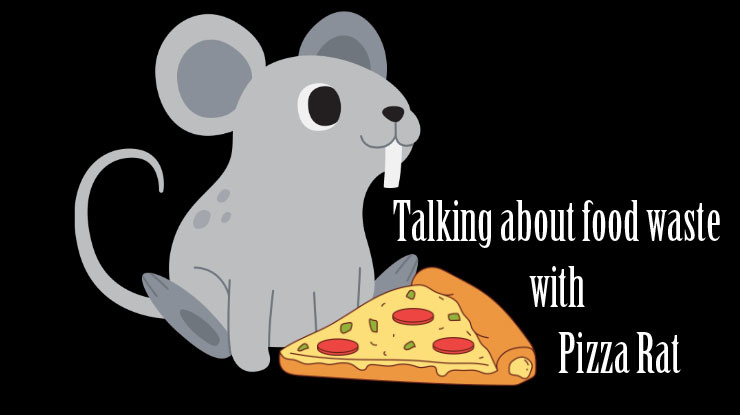Yummy!
You Gonna Eat That?
You Gonna drink That?
No
yes
yes
Meat
Eliminating meat from our diets is one of the biggest improvements we can make when we’re serious about reducing greenhouse gas emissions
If you just aren’t ready to give up meat yet, there are still some choices you can make to reduce your impact
We’ve already told you meat is a greenhouse gas heavy hitter, but how bad are we talking?
Here’s how some different types of meat compare, per kg of meat.
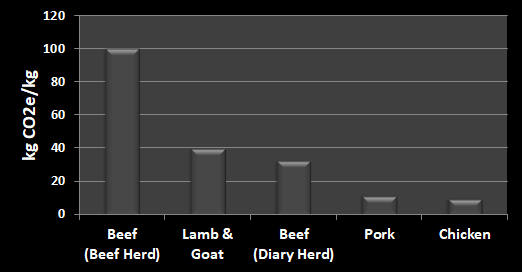
100
40
33
12
10

These totals includes methane
YES!!
IF YOU GONNa eat that,
choose this
BTW, 100 kg CO2e is equivalent to driving the average car 256 miles
So, you can reduce your impact by replacing higher impact meat (beef) with lower impact meat (chicken)
You can also decide to have “meatless Mondays” or go vegan for lunch everyday. (YUM!)
How does meat stack up to some favorite meat substitutes?
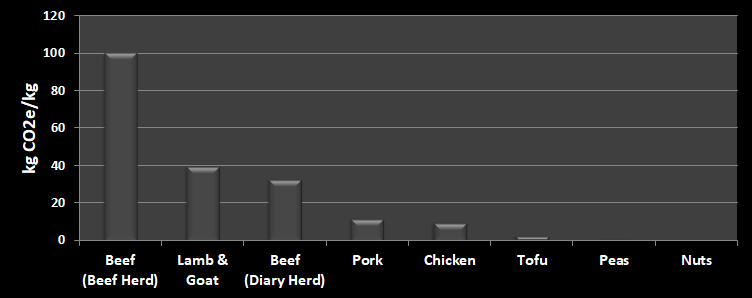
100
40
33
12
10
3
1
0.4
YES!!
YES!!
YES!!
don’t eat that,
eat THESE!
Meat production uses up a lot of resources, including land and water

You gonna think that?
What if every restaurant offered vegan options?
Like real ones. Not just salad.
Fruits & veggieS
We all know fruits & vegetables are great for us.
We also know they’re better for the planet than meat production.
So what’s the problem?
Here are the greenhouse gas emissions for producing one kg of each of the following
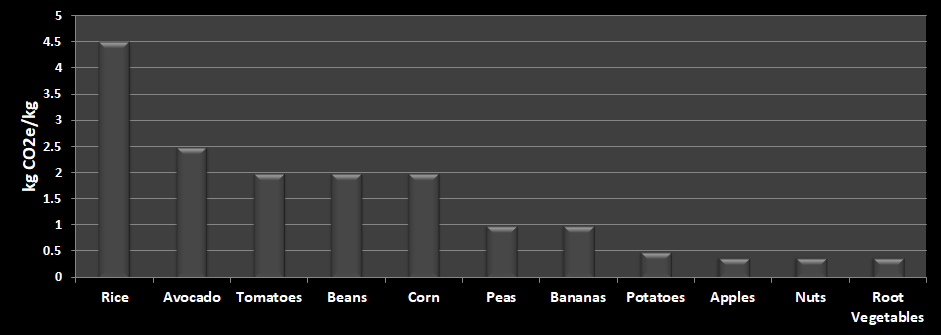
4.5

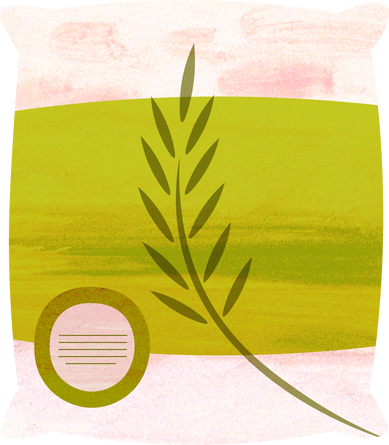



2.5


2
2
2
1

1
0.5
0.4
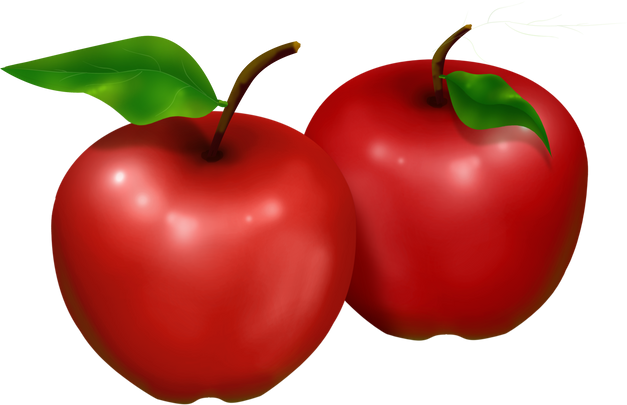
0.4

0.4
great!
So what’s the problem?
And here’s how the greenhouse gas emission for a kg each of those same fruits and veggies compares to one kg of chicken
Maybe skip the chicken sandwich today
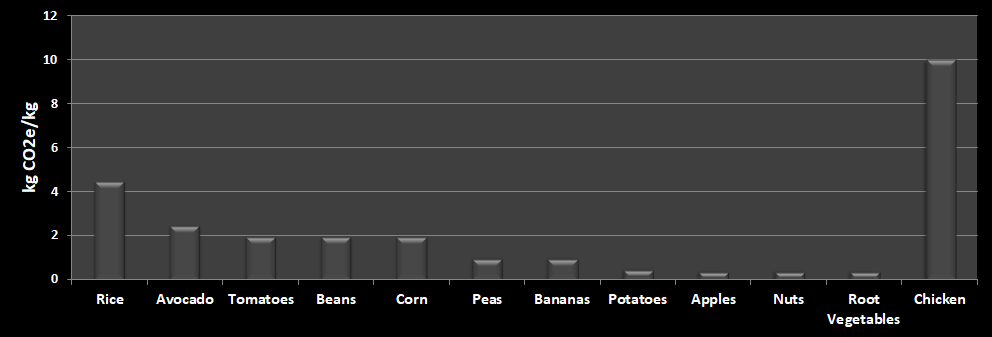
10
4.5

2.5

2
2
2
1

1
0.5
0.4

0.4

0.4
So what’s the problem?
Fruits and vegetables are good for us and good for the planet
The problem is WASTE
Here’s what contributes to the carbon footprint of wasted food across the globe:
Disposal in landfills - 20%
Agricultural production = 63%
It’s even worse in the United States
You gonna think that?
What if agricultural producers simply produced less food?
What if they gave their excess food to those in need?
What if we chose to eat less?
coffee
When it comes to coffee, the greatest contributors to carbon footprint are on-farm coffee production and how the coffee is prepared for final consumption
While we can’t control on-farm coffee production, we are in control of how we brew and prepare our daily cup
A literature review of four scientific papers found a wide range of carbon footprints (c.f.) per serving of coffee for different preparation methods.
Although it’s not all apples-to-apples, we can draw some general conclusions.
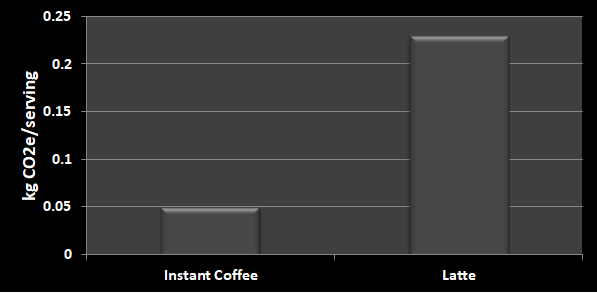

0.05
22 other results in here
0.23

Lowest C.F.
Highest C.F.
What’s going on here?
HINT:
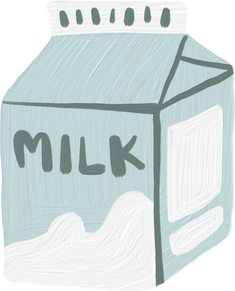

Adding milk to the espresso (to make a latte) increased the greenhouse gas emissions from 0.05 kg CO2e/serving to 0.24 kg CO2e/serving
So right there is a simple thing we can do. Either don’t add milk or use a plant-based milk instead
Yeet!
DID YOU KNOW?
A Berkeley cafe called Caffe Mediterraneum lays claim to creating the caffe latte back in the 1950s, but Starbucks made lattes ubiquitous in the USA

I thought they were European, no?

You gonna think that?
What if lattes fell out of fashion?
What if we only used plant-based milks in our coffee beverages?
Beer & Wine
For both beer and wine, raw material production and packaging are the greatest contributors to carbon footprint
While you can’t control how hops and grapes are grown, you can control in which containers you buy your beer and wine
Let’s start with beer.
(Because hey, why not?)
Carbon footprints for 1 liter of beer [kg CO2e/liter beer]
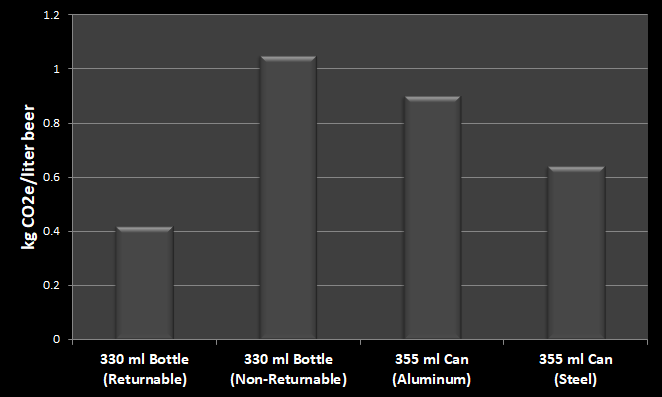
0.42
1.05
0.90
0.64
Europe
24-pack, HDPE crate
North America
24-pack, fiberboard carton
This shows the carbon footprints of 1 liter of beer assuming different types of packaging:
- 330 ml glass bottles
- returnable*
- non-returnable
- 355 ml aluminum can
- 355 ml steel can
*assumes reuse 30 times
Across all studies surveyed, these are the general results for relative packaging impacts
But what does that mean?
How much does packaging contribute to beer’s carbon footprint?
65%
0.68
Here’s that liter of beer again, but now you can see just how much packaging can contribute to the overall carbon footprint.
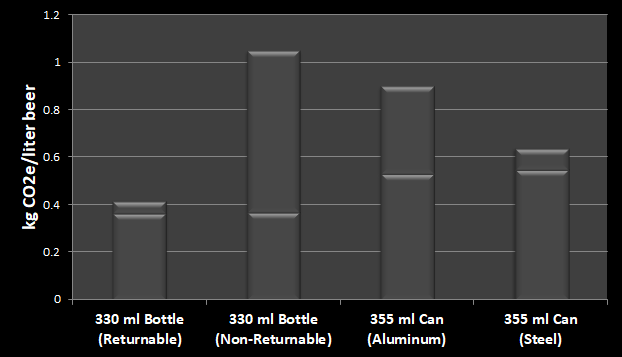
13%
0.055
41%
0.37
15%
0.096
In general, raw material (hops) constitutes 22% of beer’s carbon footprint, while packaging is a whopping 40%
Aluminum production requires large amounts of energy, resulting in higher emissions than steel production.
“Great info,” you say, “but I don’t buy my beer in liter containers.”
What’s a consumer to do?
Carbon footprints for 355ml (12 oz) of beer
[kg CO2e/355 ml]
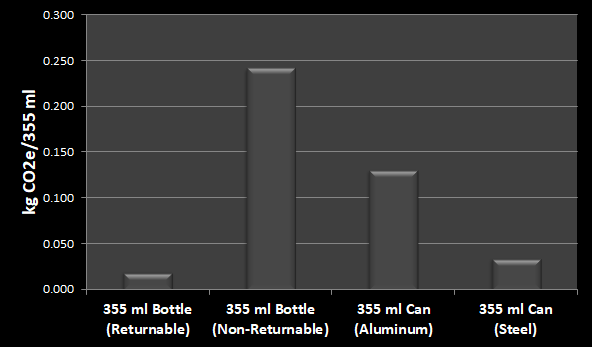
0.019
0.242
0.131
0.034
Here’s our beer, but now in a package size you’re more likely to see at the store (12 oz).
YES!!
YES!!
If You gonna drink that, choose these
Use
72x
Pizza Rat would like to point out an Italian study determined reusable steel kegs were the least impactful, so consider getting your beer on tap.
You gonna think that?
What if we got comfortable with the idea of actually reusing glass bottles instead of melting them down to recycle?
Now, on to wine.
(Because hey, why not?)
?
?
?
We already mentioned the two biggest contributors to wine’s carbon footprint are raw material production (planting & growing grapes) and packaging
In North America, for a standard 750 ml wine bottle, packaging is 33% of the total carbon footprint

The environmental impact of a bottle of wine varies from year to year, based largely on weather
As with beer, we’re going to focus on packaging, since that’s something about which we can make a choice
In North America, a 750 ml bottle of wine has a carbon footprint = 1.79 kg CO2e/750 ml
That means the bottle alone contributes 0.60kg CO2e/750 ml
This is equivalent to driving the average car 1.5 miles
How do other packages compare to the standard 750 ml bottle?
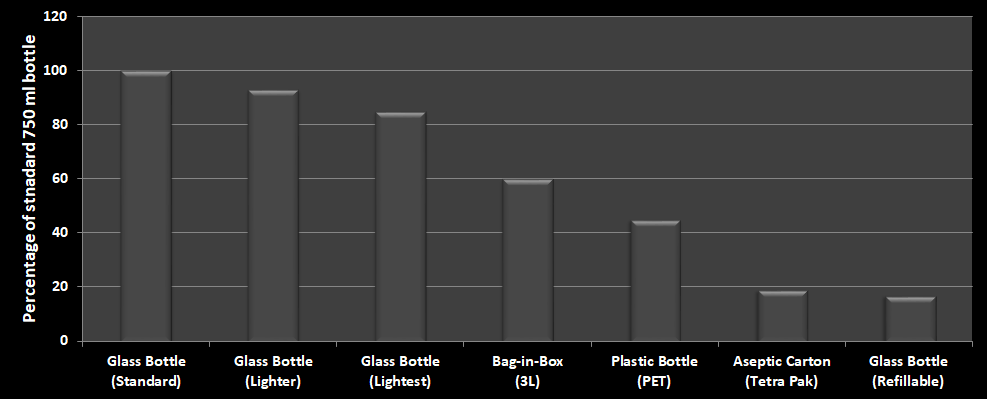
7% less
15% less
40% less
55% less
Percent less impactful
(by carbon emissions)
than a standard
750 ml glass bottle
81% less
83% less
Using lighter bottles translates into reduced emissions from transportation
YES!!
YES!!
YES!!
YES!!
If You gonna drink that,
choose these
Finally...
Carbon footprints of one liter of beer vs one liter of wine in single use glass bottles
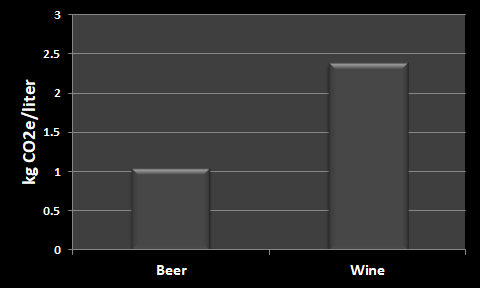
1.05
2.39
You gonna drink that?
1.05 kg CO2e is equivalent to driving the average car 2.7 miles
2.39 kg CO2e is equivalent to driving the average car 6.1 miles
milk:
dairy & plant-based
As with meat, plant-based milk alternatives are a better choice.
The greatest impact for plant-based milk comes from water use.
Here’s a look at the carbon footprints for a liter of cow’s milk, rice milk, soy milk, oat milk, and almond milk.
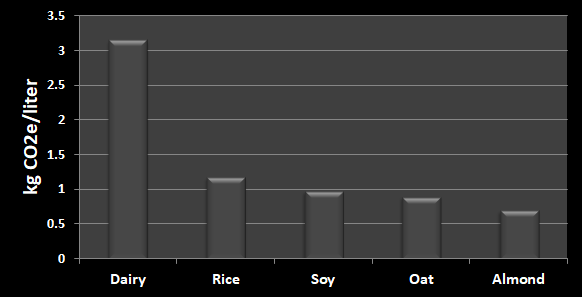
3.15
1.18
0.98
0.9
0.7
So which should you choose?
First of all, let’s toss the cow, shall we?
Once you get down to choosing between rice milk, soy milk, oat milk, and almond milk, it’s largely a matter of preference and which environmental hit you’re still willing to allow
Each almond takes 12L
(3.17 gallons) of water to produce
If it takes 100 grams of ground almonds to make 1L of almond milk and each almond is 1-2 grams...
Yeah. But it’s still better than cow’s milk. Here’s how many liters of fresh water are used to make one liter of milk.
!!!
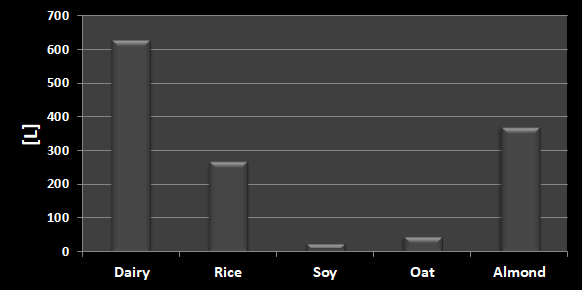
628.20
628.20 liters = 166 gallons
269.81
27.80
48.24
371.46
Some sources say 297L!
Some sources say 1050L
WHAT?
This ain’t so great, either
Sorry, Bessie
If you’re going to focus on carbon emissions and not worry about water or land use, then any of the plant-based milks are a better alternative to cow’s milk
But fresh water is a precious and dwindling resource

3.15
1.18
0.98
0.9
0.7
YES!!
IF YOU GONNa DRINK that,
choose this
You gonna think that?
What if using animal milk for cooking stopped being a thing?
Food Waste
Food Waste

Food Waste Facts
In a recent 2023 survey of over 9,000 households across the US, the average food wasted was over 6 cups every week
That's like a whole 20 gallon garbage can full of food wasted every year!
87% of households surveyed said they waste edible food
… but at the same time 86% think Americans should reduce the amount of food we waste
It's ALL of our job to not waste food!
No agency can monitor your personal food waste, only you can

In the US, 80 million tons of food is wasted every year,
That's about $310 billion dollars worth of good food
that ends up in landfills every year!
That's like 30 million elephants, or 3 million jets, or 500 thousand blue whales, 6 million buses, 10 million t-rex’s, …
Do you know what that does?
That generates a whole lot of greenhouse gas
Pizza
Pizza
Party!
The Food & Drug Administration figures that about 30% to 40% of all the food in the United States is wasted
Well, everything goes to landfills, it's not just food, right?
Food waste is the largest category of matter to be sent to landfills.
About 46% of everything that is dumped in the US is food

Households that throw away food as soon as it hits the expiration date will waste twice as much food as those that continue to eat perfectly good food even though it is passed the listed sell-by date
Wanna Date?
Wanna Date?
Per the USDA:
Does Federal Law Require Food Product Dating?
Except for infant formula, product dating is not required by Federal regulations.
Are Dates for Food Safety or Food Quality?
Except for infant formula, dates are not an indicator of the product’s safety and are not required by Federal law.
Per the USDA:
Does Federal Law Require Food Product Dating?
Except for infant formula, product dating is not required by Federal regulations.
Are Dates for Food Safety or Food Quality?
Except for infant formula, dates are not an indicator of the product’s safety and are
not required by Federal law.
Well, no one would eat this anyway, right?
According to Feed America, 44 million people in the United States face hunger.
That might be the unhoused woman you drive by every day, it may also be your neighbor, the kids' family your kid goes to school with, your friend, your grandma, and just because people don’t always talk about it, doesn’t mean it's not happening them.
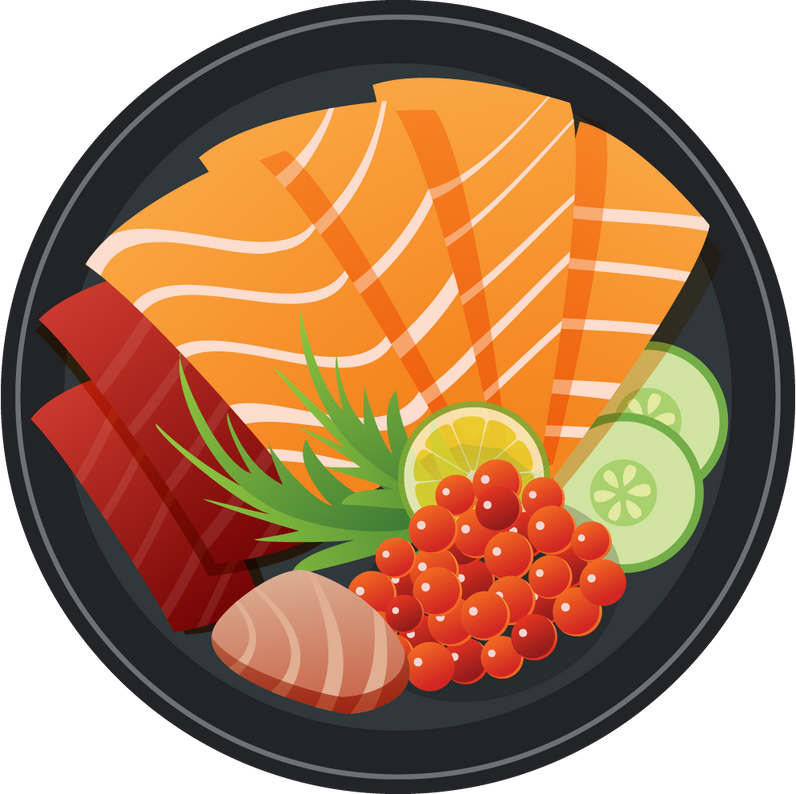
About 50 billion meals worth of good food goes to landfills every year.
About 50 billion meals worth of good food goes to landfills every year.
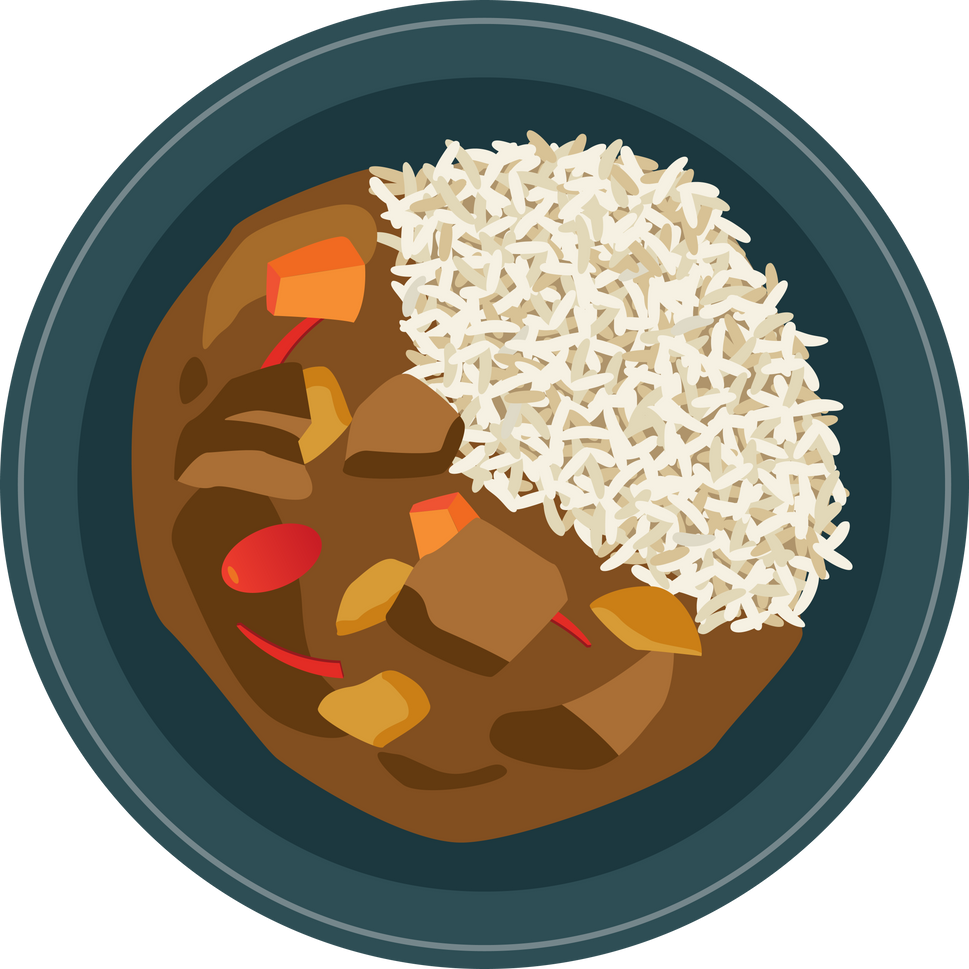

Those bananas are moldy though, no good to anyone …
Wasted?
Wasted?
Wasted?
We are not talking about inedible food here.
Food waste is safe, high quality, very edible food that just gets thrown out instead of eaten or stored for later consumption.
Food waste can come from your home, from stores, restaurants, or food producers
The fluctuating supply and demand may lead to crops being left and not even harvested, so that's food that didn’t even get into the supply chain.
... but what can i do?
... but what can i do?
Easy ways for you to reduce food waste
at home:
Be a trash tracker. If you make a note every time you throw food out, you will easily start to get a good picture of how much food you really waste. Knowledge is power! The more you know, the more likely you are to reduce your food waste
Be a trash tracker.
If you make a note every time you throw food out, you will easily start to get a good picture of how much food you really waste. Knowledge is power! The more you know, the more likely you are to reduce your food waste
Is your fridge packed?
Take out a shelf!
Really - if you have less storage space there you can start to reduce your food waste by reducing your temptation to over buy. Your food will also be more visible and less likely to go bad.
How about just buying less food?
we know it takes up a little more time, but buy local and get what you need for a few days at a time, rather than months worth of bulk food. Maybe you could get a little exercise too by walking to your local market a couple of times a week, and carrying just what you need back home.

Still have
extra food?

Snack Party
Time!!!
Share locally! Build a food share or exchange network of neighbors and friends
Post your extras for free on local apps like NextDoor or CraigsList.
Have a party!
Meal prep to store or freeze for meals for the whole week.
Check in with your neighborhood food bank to see what they can realistically use before dropping off.
This year the FDA, USDA, and EPA proposed a plan to reduce food waste and the greenhouse gasses they produce by 50% in America by 2030 by:
* Speeding up the recycling rate for organic waste
* Incentivize and encourage food loss and waste prevention
* Preventing potential waste of food where possible
The Pizza Rats!

Hi there! We are Missy and Kat, the Pizza Rats, and we are judging your food and beverage choices.
Kat judges you the most. She is an awful vegan and everything you are doing is wrong.
Missy is nicer. She is not nicer until she has had coffee. Missy will judge your coffee habits. Basically, you are doing it wrong.
Hope you like the pic of us. We usually don't smile that much.

